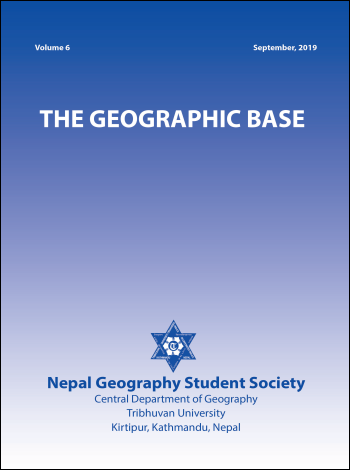Yarsagumba Collection Trend and its Impact on Livelihood of People of Bajhang District in the Context of Climate Change
DOI:
https://doi.org/10.3126/tgb.v7i0.34272Keywords:
Climate change, farmer’s income, livelihood, YarsagumbaAbstract
Yarsagumba is an endoparasitic fungus growing on insect larvae found in the high Himalayan region of Nepal, which is a very expensive and better income source for local peoples. The study was conducted randomly selecting 80 households of two rural municipalities namely Talkot and Saipal who are involved in Yarsagumba collection to assess the impact of Yarsagumba on the livelihood of local people of Bajhang district. The surveyed result revealed that climate change has highly affected the harvesting of Yarsagumba. Its selling price is affected by market value fluctuation. Yarsagumba plays a significant role in the livelihood of the local peoples. The surveyed data comparing the last five years (2068 to 2072) shows that the highest income was found to be NRs. 139,200 per household per season in the year 2068. The market price, trade, and marketing channels of Yarsagumba are unclear and commercial trading takes place illegally because of fear of being charged higher taxes. The temperature and humidity play an important role in the abundance and formation of Yarsagumba. The study showed that 43.8% of respondents perceived change in temperature and rainfall pattern over 10 years, and 73.7% of respondents perceived that temperature and rainfall affected Yarsagumba collection.
Downloads
Downloads
Published
How to Cite
Issue
Section
License
© Nepal Geography Student Society




